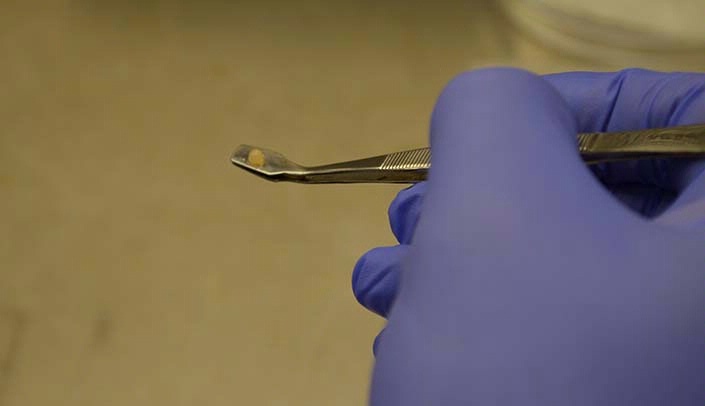After several hundred experiments, Andrew Dudley, Ph.D., his University of Nebraska-Lincoln collaborator Angela Pannier, Ph.D., and their team achieved a first step in their quest to begin their search for new ways to treat growth plate disorders.
In growth plate disorders, growth plate cartilage, or the cartilage found at the end of long bones in adolescents, doesn’t function the way it should, which affects the length and shape of bones.
One of the most common genetic growth disorders, achondroplasia or dwarfism, causes arms and legs to be short in comparison with the head and trunk. However, some disorders affect only specific bones, such as brachydactyly, which causes shortening of the digits, whereas other chondrodysplasias cause one arm to be shorter than the other.
Growth plate disorders also can result from trauma to the growth plate or when the growth plate has to be removed to treat certain pediatric cancers. Treatment for these disorders involve limb lengthening or shortening by breaking the bone and resetting it — potentially multiple times throughout childhood and adolescence.
“There are likely better ways of approaching this,” said Dr. Dudley, UNMC associate professor in the UNMC Department of Genetics, Cell Biology and Anatomy. “The hope is tissue engineering of growth plate cartilage can help reduce the pain, suffering and cost of growth plate disorders.”
Dr. Dudley and team recently published an article in the journal Tissue Engineering Part A that documents the first development of a growth plate model in the laboratory in which mature and immature cartilage cells communicate. This communication is necessary for cartilage and bone growth.
“Scientists have been able to produce cartilage in the laboratory, but the tissue doesn’t grow and isn’t mechanically strong,” Dr. Dudley said. “Growth depends on immature and mature cells in the cartilage talking to each other. We’ve been able to stimulate the cells in a way to get very distinct zones of mature and immature cells that talk.”
Through the work with a mouse model, the team can now ask detailed questions of how do these cells talk to each other and what are the minimum requirements of the signaling networks that regulate cartilage growth.
“Our study represents an important step in the engineering of cartilage, and is much different than other reports in the tissue engineering field,” said Dr. Pannier, an associate professor in the UNL Department of Biological Systems Engineering. “While others have focused on using mature components to build cartilage, we hypothesized that we needed to start with immature cells, and together with the right scaffolding, we could allow the cells to assemble and communicate.”
The research was funded by a UNMC/UNL Bioengineering for Human Health Grant provided by the vice chancellors of research at UNMC and UNL, with additional funding from the Mary and Dick Holland Regenerative Medicine Program. Other authors on the study include UNMC graduate student Alek Erickson and former UNL graduate student Taylor Laughlin.
